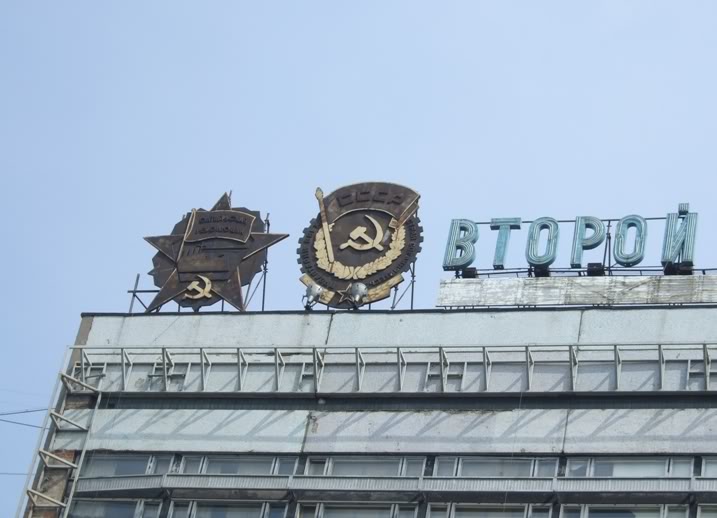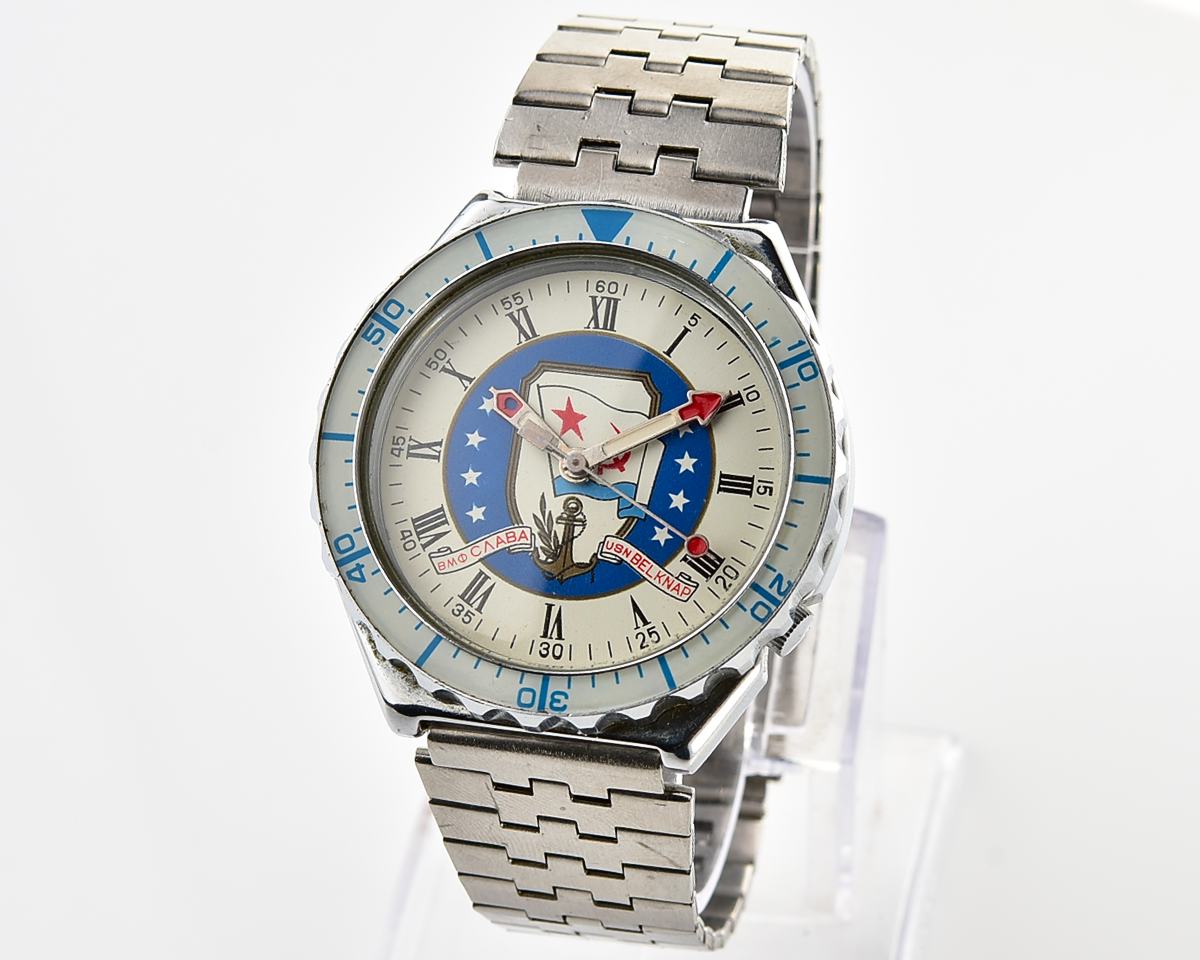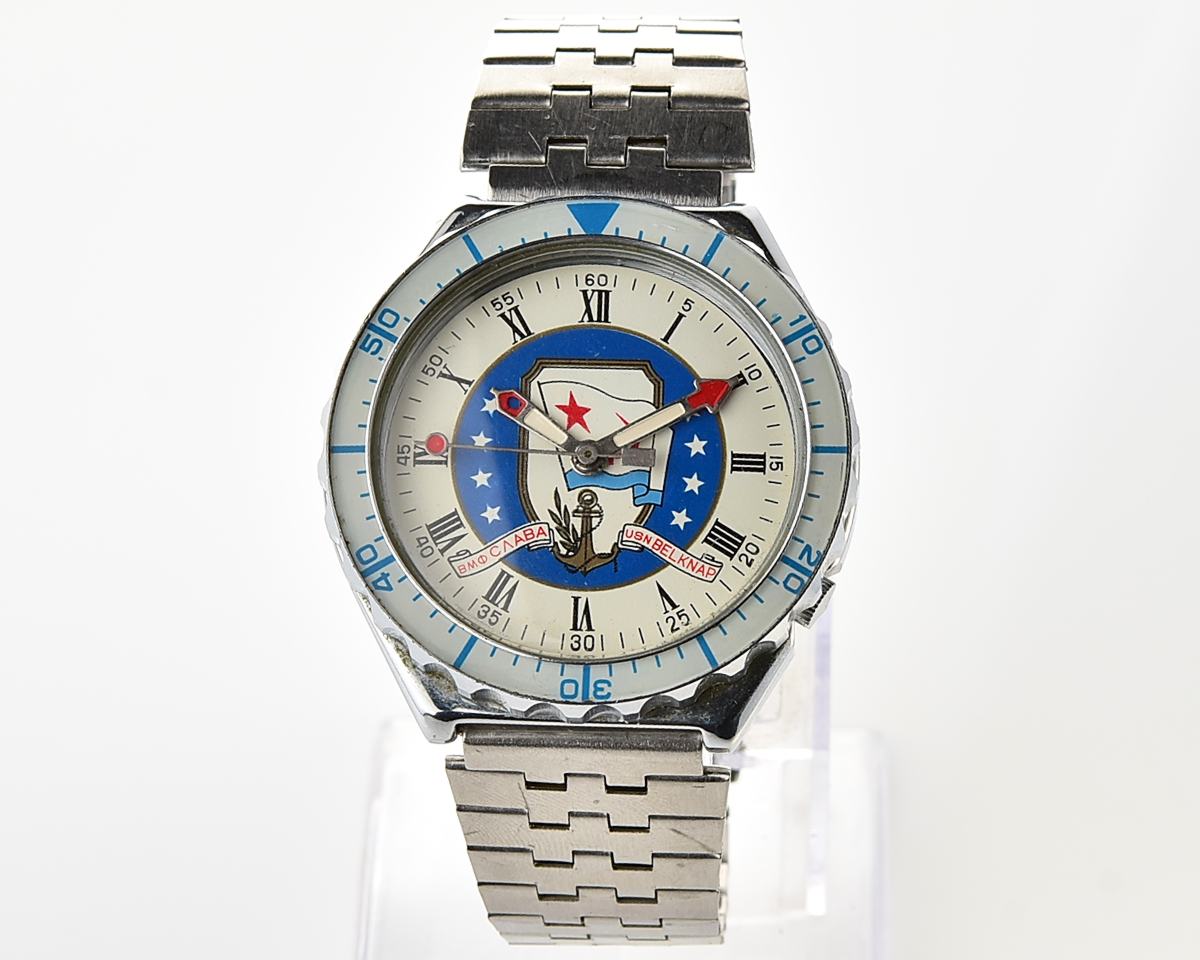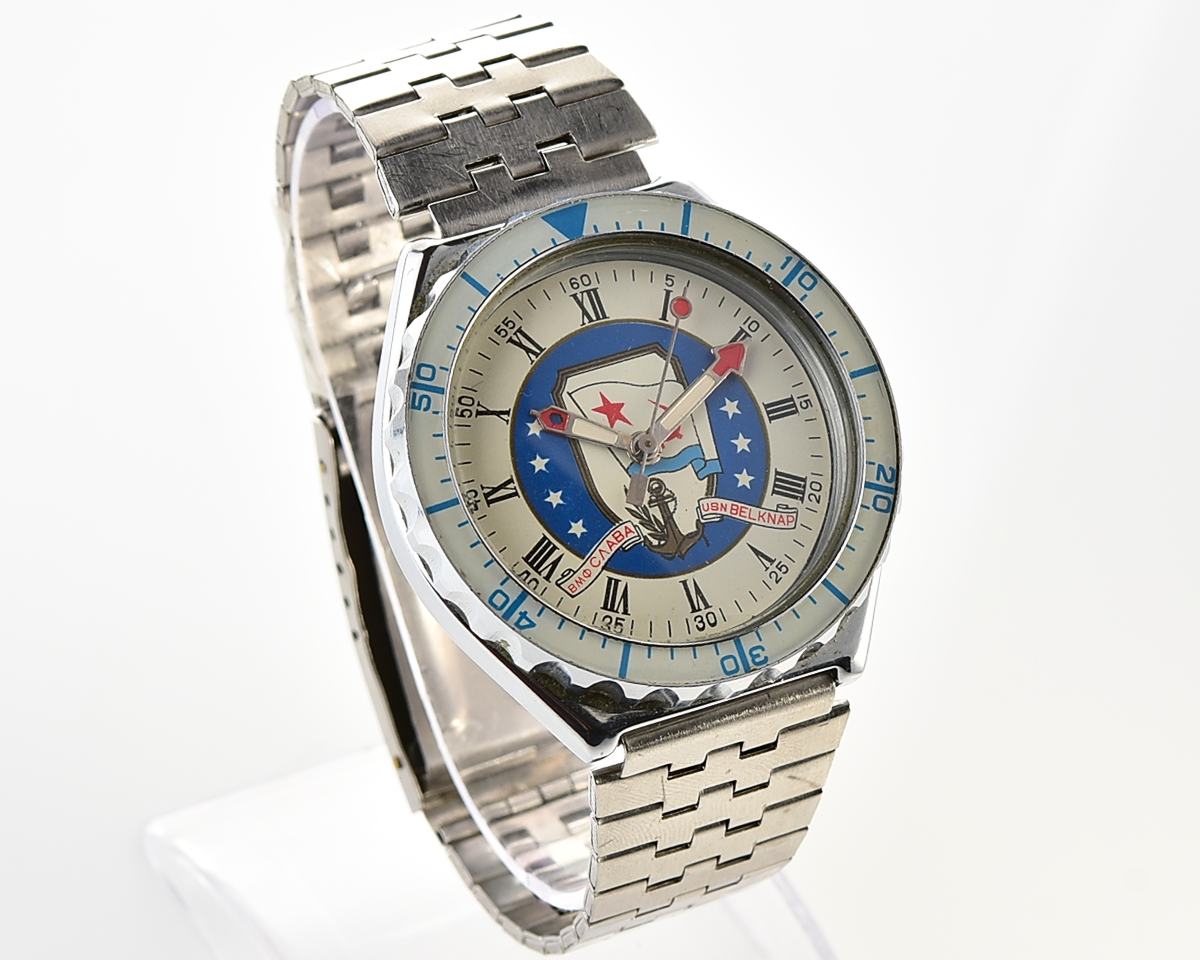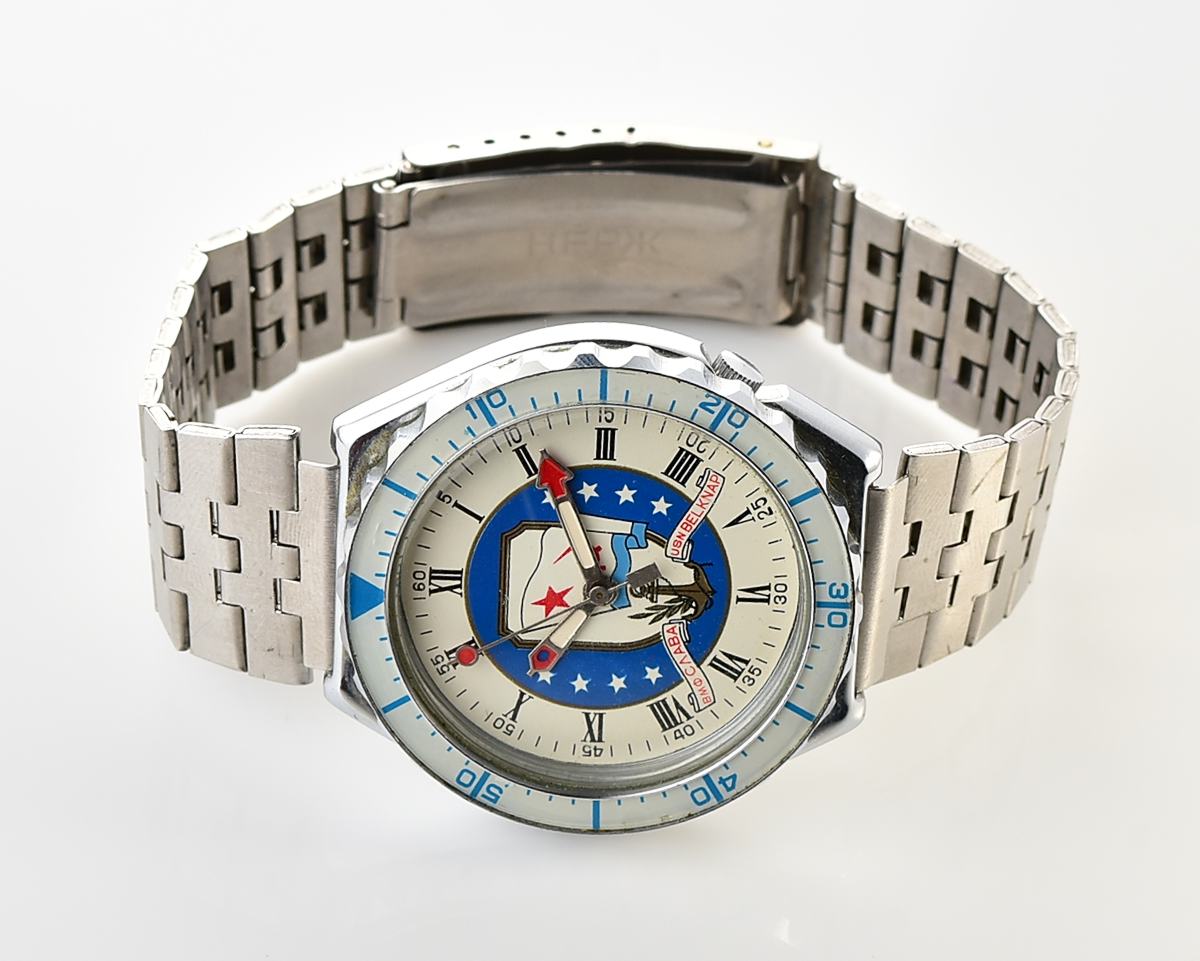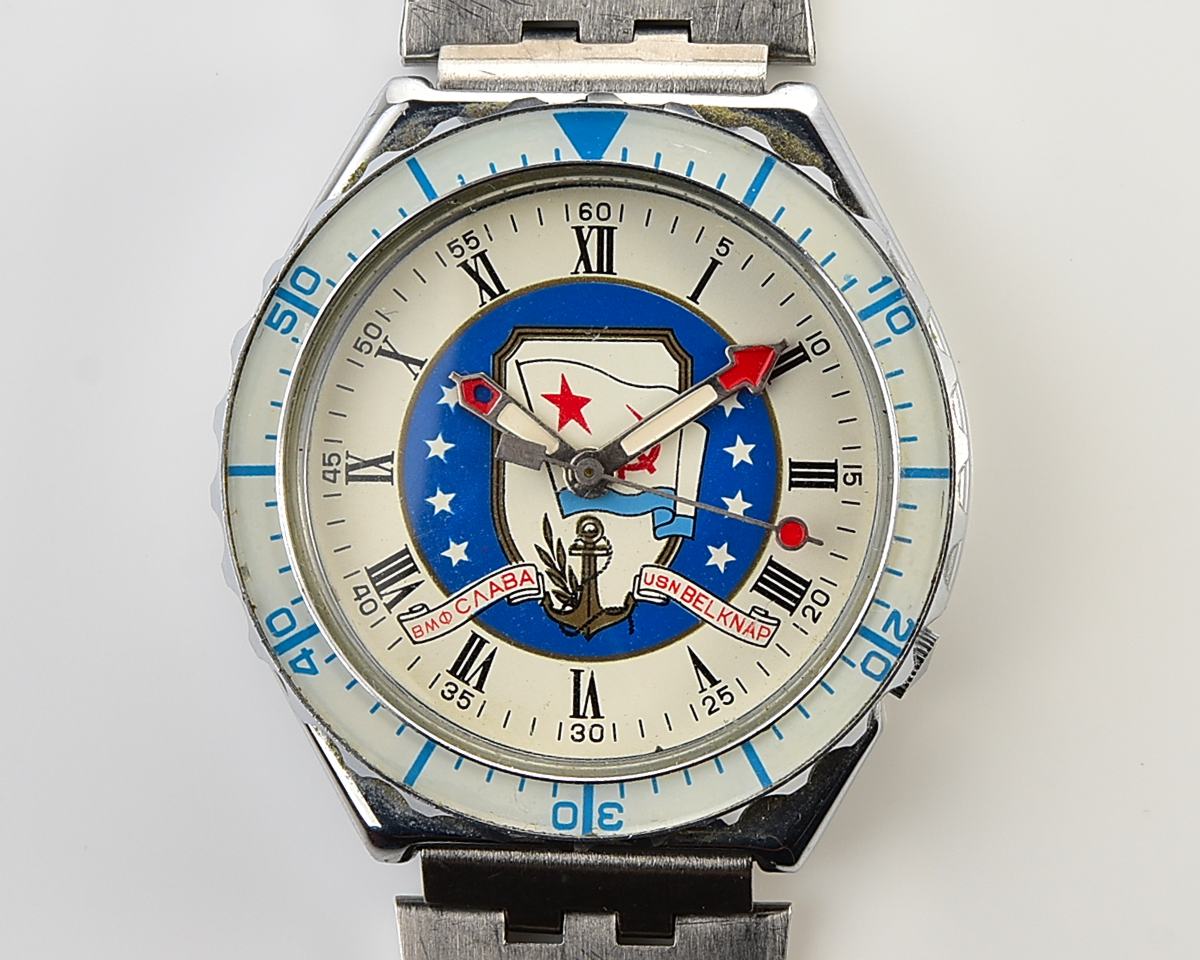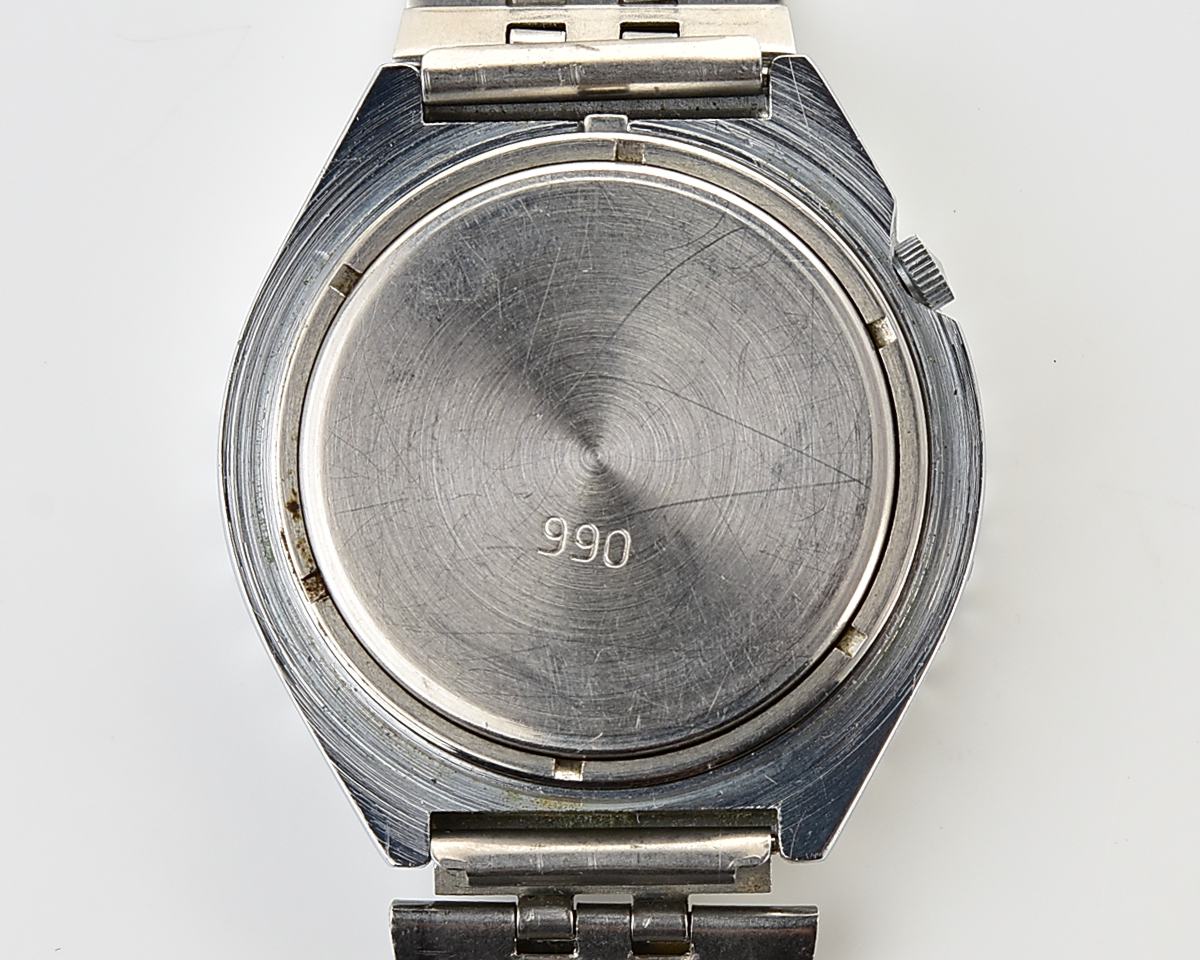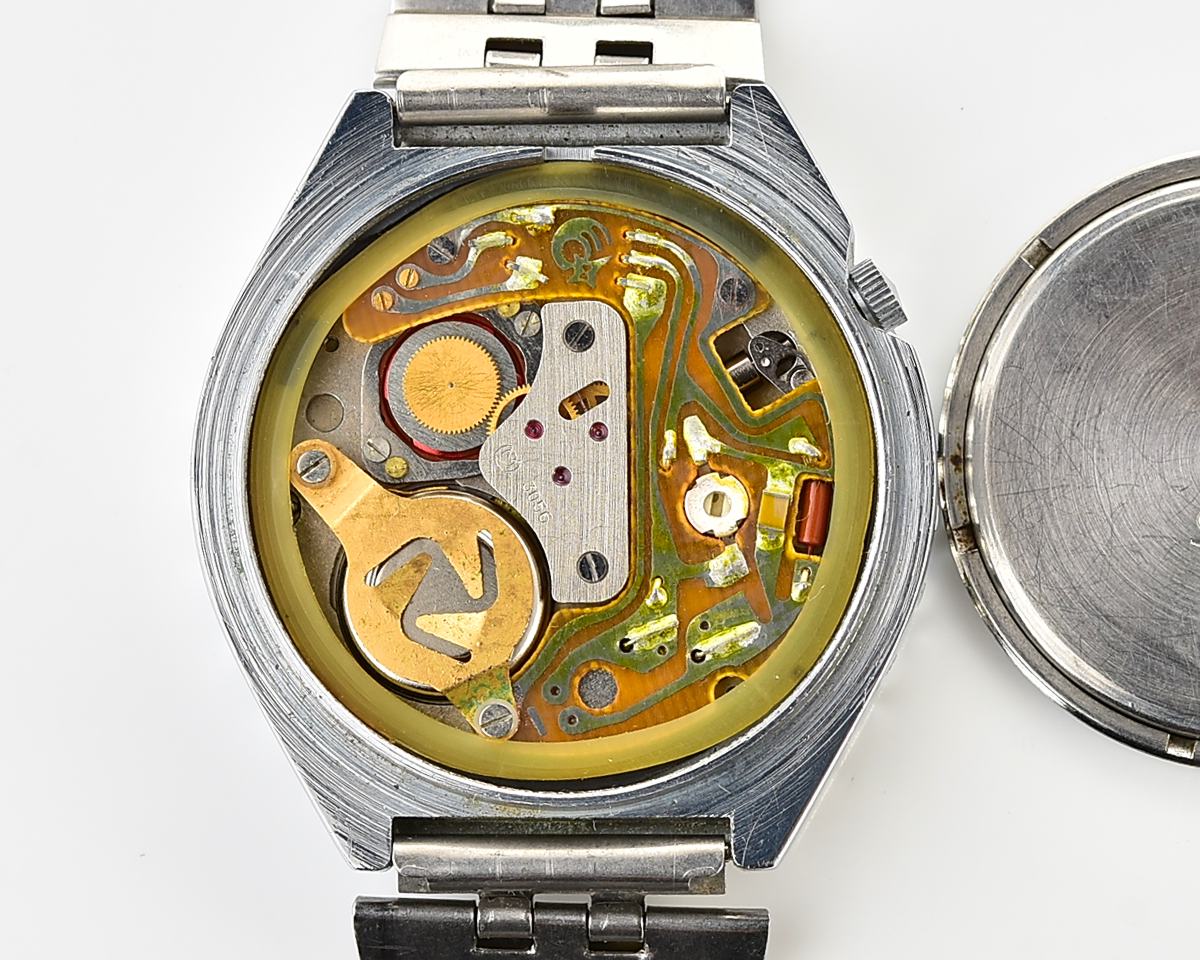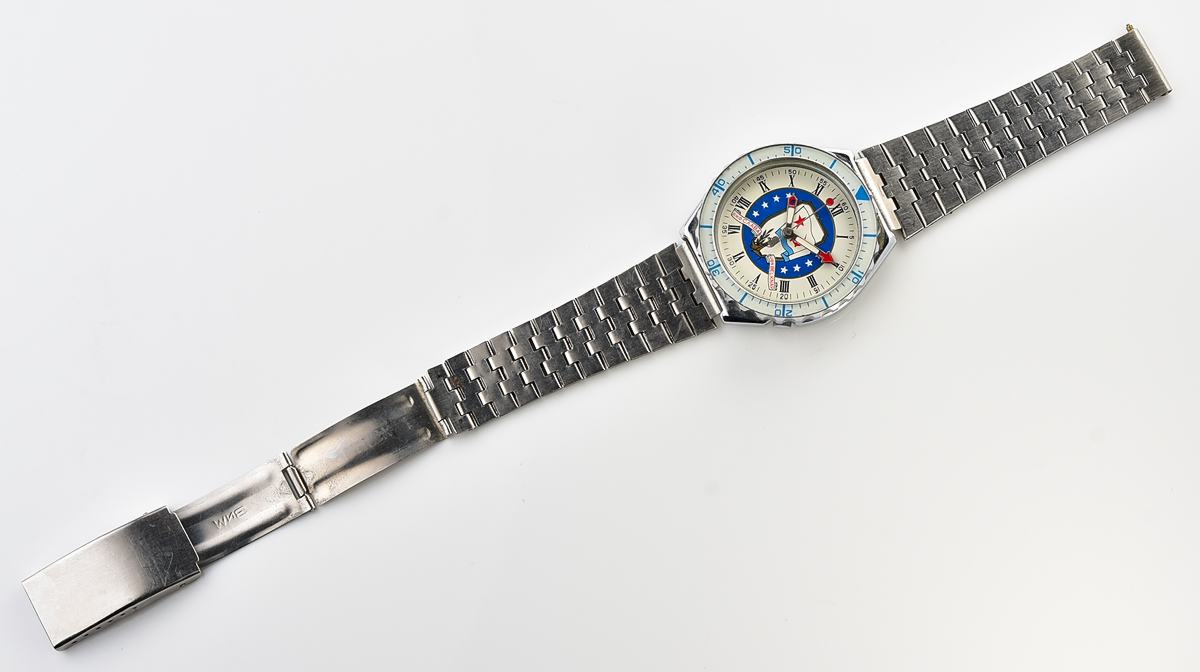Description
Soviet SLAVA quartz watch
MADE IN USSR!
Soviet quartz watch “Slava” for the participants of the Malta Summit.
During the meeting, the leaders of the superpowers proclaimed the end of the Cold War. The dial shows rocket carrier “Slava” of Soviet Navy and the American cruiser “Belknap ” (USN Belknap) which ensured the security of the negotiations.
Commemorative vintage watch made by 2nd Moscow Watch factory, USSR.
The watch has automatic quartz movement and operates on a single battery.
CASE SIZE 42mm x 40mm
THICKNESS 11mm
LUG WIDTH 18 mm
MOVEMENT – SLAVA 3056
TYPE Quartz
FUNCTIONS Hours, Minutes, Seconds
Note on accuracy: watch looses 2 seconds a day.
Watch went through a complete service by a professional watch tech and keeps good time.
Comes with stainless steel bracelet included.
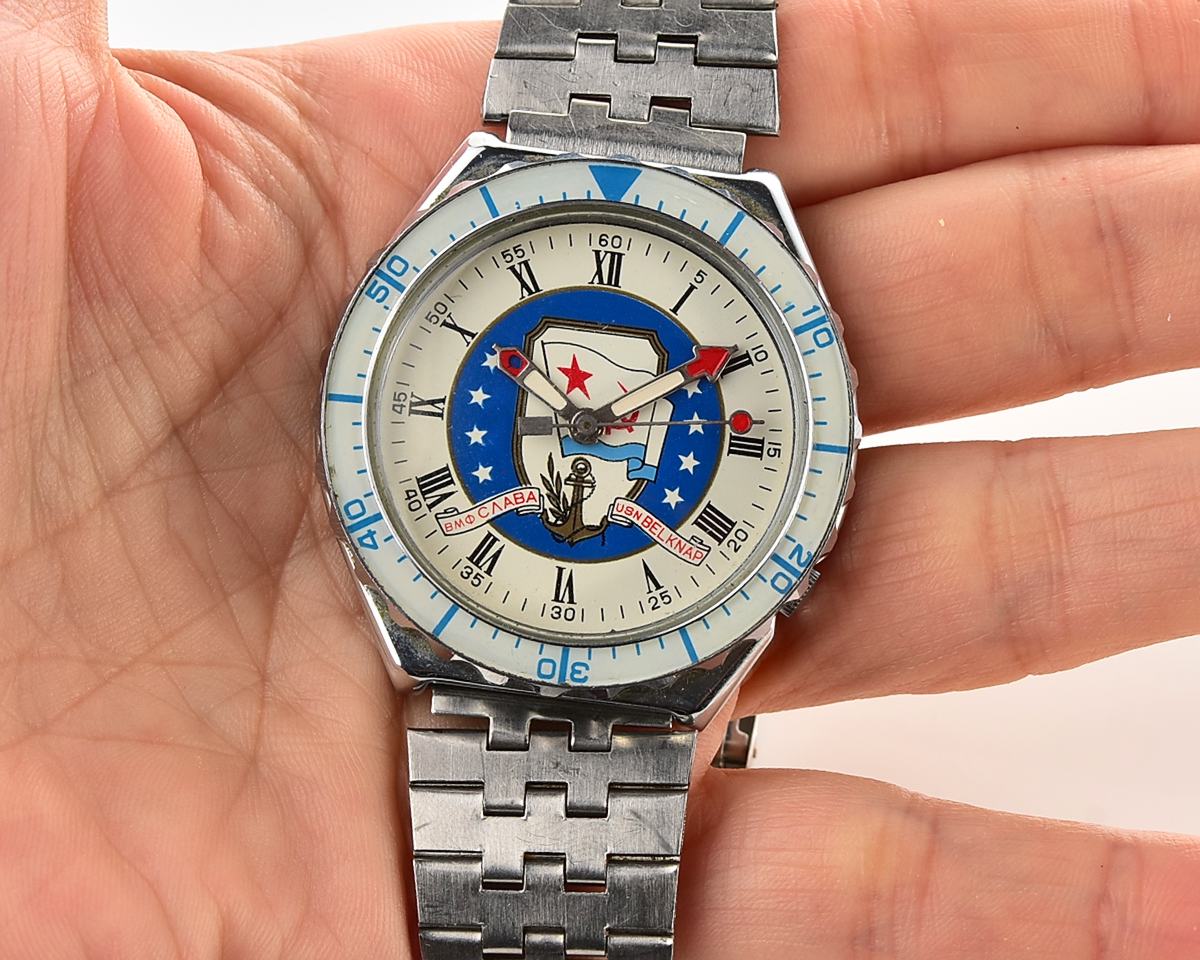
The Malta Summit
was a meeting between United States President George H. W. Bush and Soviet General Secretary Mikhail Gorbachev on December 2–3, 1989, just a few weeks after the fall of the Berlin Wall. It followed a meeting that included Ronald Reagan in New York in December 1988. During the summit, Bush and Gorbachev declared an end to the Cold War, although whether it was truly such is a matter of debate. News reports of the time referred to the Malta Summit as one of the most important since World War II, when British prime minister Winston Churchill, Soviet General Secretary Joseph Stalin and US President Franklin D. Roosevelt agreed on a post-war plan for Europe at the Yalta Conference.
The meetings took place in the Mediterranean, off the island of Malta. The Soviet delegation used the missile cruiser Slava, while the US delegation had their sleeping quarters aboard USS Belknap. The ships were anchored in a roadstead off the coast of Marsaxlokk. Stormy weather and choppy seas resulted in some meetings being cancelled or rescheduled, and gave rise to the moniker the “Seasick Summit” among international media. The meetings ultimately took place aboard Maksim Gorkiy, a Soviet cruise ship chartered to West German tour company Phoenix Reisen, which anchored in the harbor at Marsaxlokk.
*Source – https://en.wikipedia.org/wiki/Malta_Summit
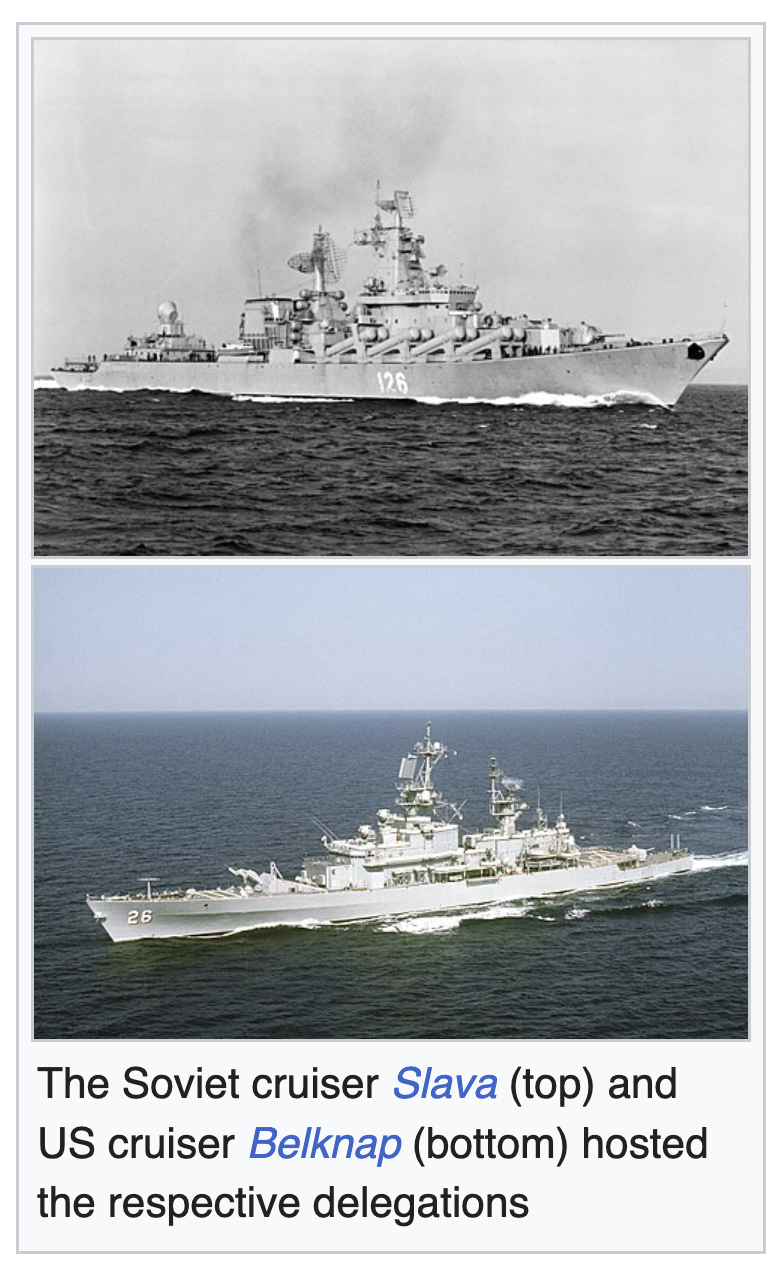
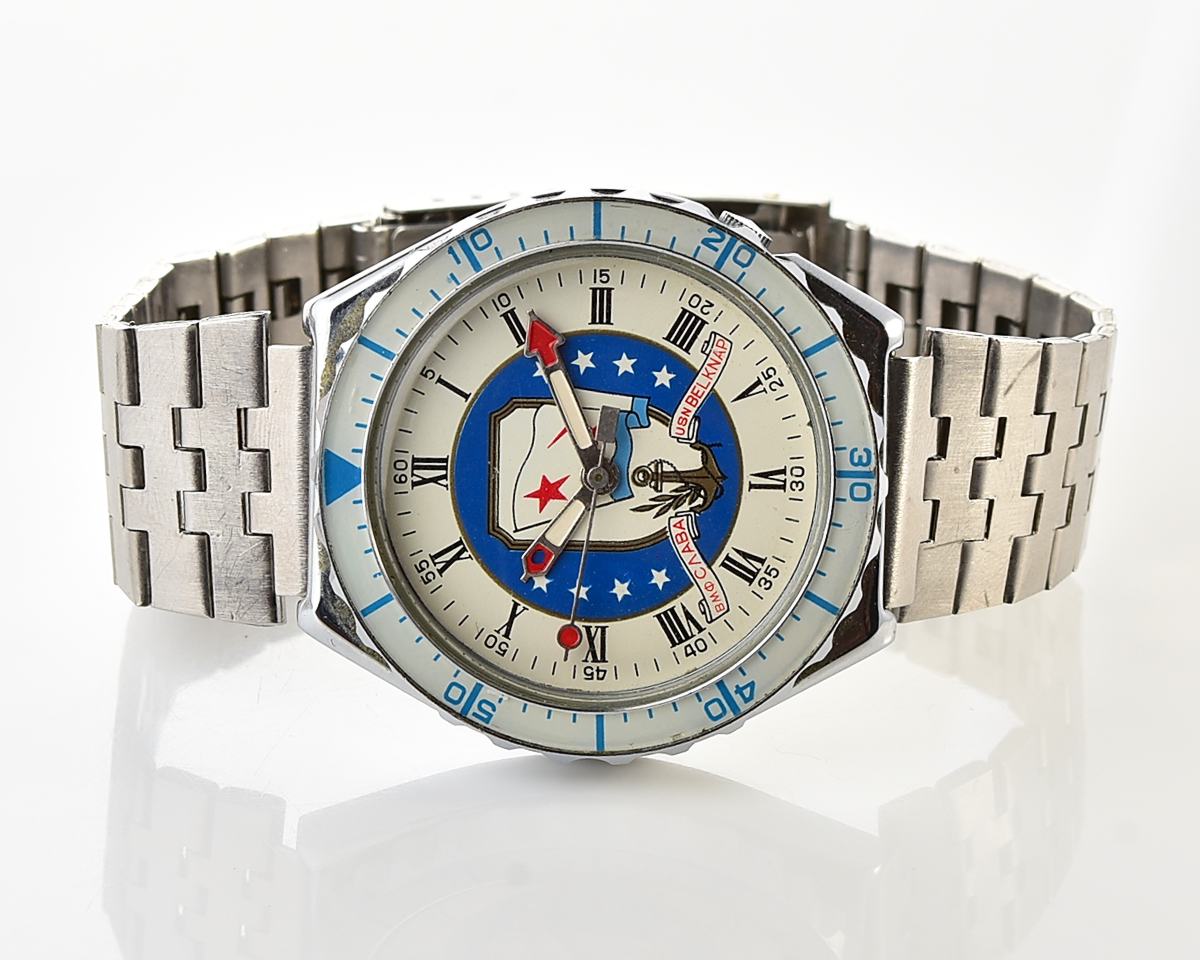
This watch ships out from🇺🇦 Ukraine with tracking number

Modes of payment:
- PayPal
- Credit Cards (VISA, MasterCard, American Express, Discover)
We guarantee that the item in this ad looks and works as advertised and offer money back guarantee on this.
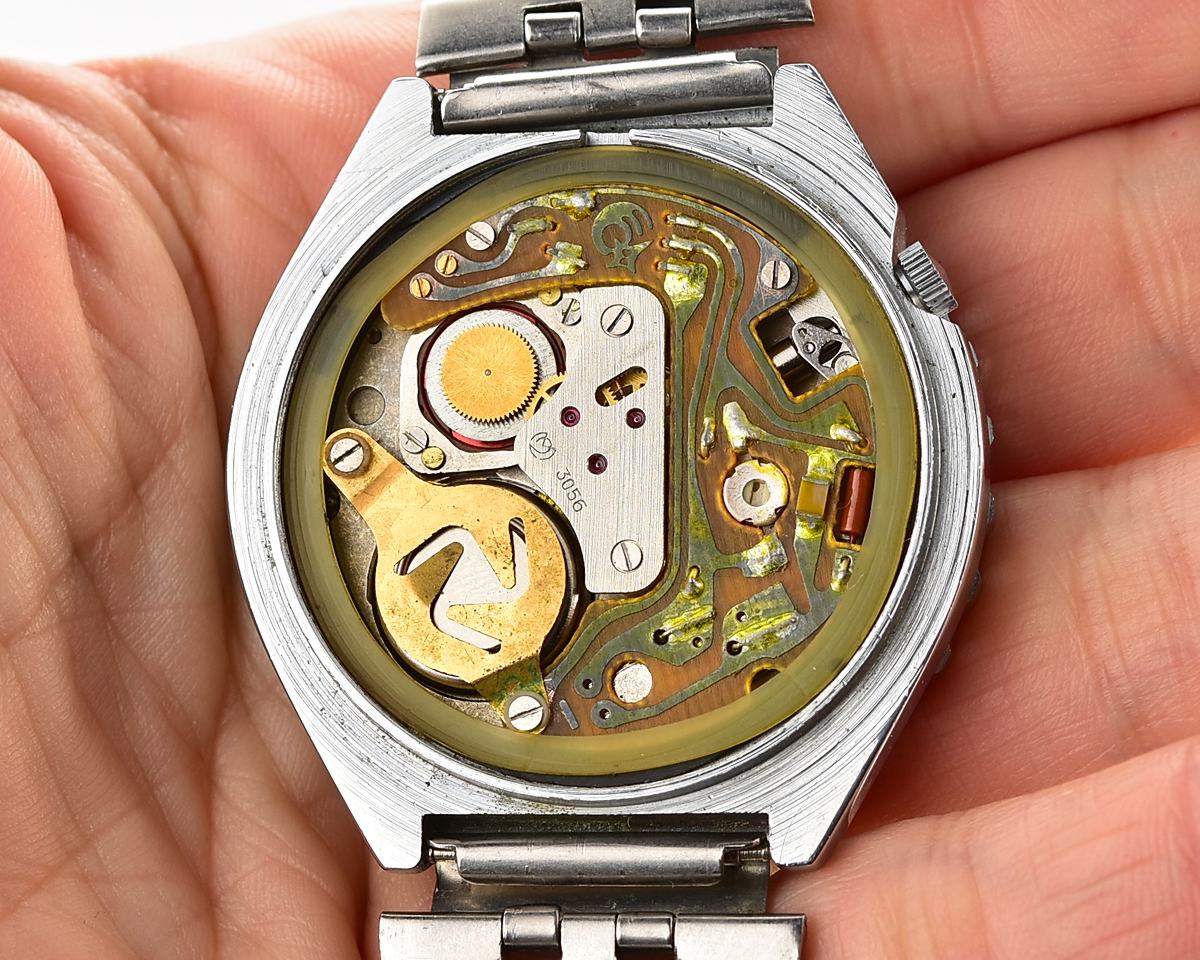
The 1989 Malta Summit
Following the end of World War II, between 1946 and 1991, the United States (US), the Soviet Union (USSR), and their respective allies were locked in a long, tense conflict, known as the Cold War. Although the parties were technically at peace, the period was characterized by an aggressive arms race, proxy wars, and ideological bids for world dominance.
By the late 1980s, the situation had started to change due to a multitude of Factors. The transfer of Soviet power to Mikhail Gorbachev was significant as he opted for a policy of détente (the relaxation of strained relations) with the United States. He sought to reform Communism and introduced the concepts of “glasnost” (openness) and “perestroika” (change). The aims of such manoeuvres remain debated to this day. Simultaneously, Communist governments in Eastern Europe were collapsing, Hungary had just opened its border with the West, and the infamous Berlin Wall collapsed in November 1989.
Between 2-3 December 1989, United States’ President, George Bush, and the Soviet Union Leader, Mikhail Gorbachev, had scheduled the Malta Summit which is now considered by some historians as the most important meeting between the USA and USSR since the Yalta Conference of 1945, when Franklin D. Roosevelt, Winston Churchill and Joseph Stalin met to divide spheres of influence after the end of World War Two.
Despite the fact that during the Cold War, the limelight was focused on the two main blocs led by US and the USSR, it is crucial not to overlook the input of neutral countries towards the creation of a more peaceful world. The 1989 Malta Summit is a testament of Malta’s resolute determination through the years to strive for peace, security and multilateralism.
Achievements
The 1989 Malta Summit heralded a new era of international relations and significantly reduced the immediate nuclear threat posed by the Cold-War on mankind. The US and USSR leaders declared a planned reduction in troops within Europe and that a reduction in weaponry would be discussed at a meeting scheduled for June 1990. The desire to sign an agreement on strategic nuclear arms reduction and to move towards a chemical weapons treaty were signalled by the two parties.
The two sides had also come to realize that a new multipolar world was evolving, with an integrated Europe, a strong Japan and China, while India too was becoming more dynamic. In this regard, patterns of cooperation would be necessary in order to take account of new realities. It was time for the USSR and the US to abandon the image of enemies.
However, although the end of the Cold War brought about an era of globalisation together with a renewed hope in peaceful and joint progress, regrettably the positive spirit which characterised the post-Cold War era did not have a long-lasting effect. Nowadays, we once again find ourselves in an environment characterised by division and lack of trust. This is evident in the unilateral actions adopted by states and in the lack of trust in finding joint solutions through multilateral organisations. Despite the continued prevalence of globalisation, it is clear that states have still not fully grasped the notion that in a globalised world, transnational issues can only be solved through joint multilateral action. The 1989 Malta Summit is a timely reminder about the ability of states to rise to the occasion and to find the necessary will power to stive for a better world.
Source – https://foreign.gov.mt/resources/the-1989-malta-summit/
About the watch factory

Slava (Russian: Cлава, meaning “Glory”) watches were classic “civil” Russian watches.
The Slava factory (known originally as the Second Moscow Watch Factory) was the second non-military watch maker established in the Soviet Union, in 1924.
The watches of this brand have always been meant for civilian consumption, without military or aerospace pretensions. As of today the factory no longer produces.

